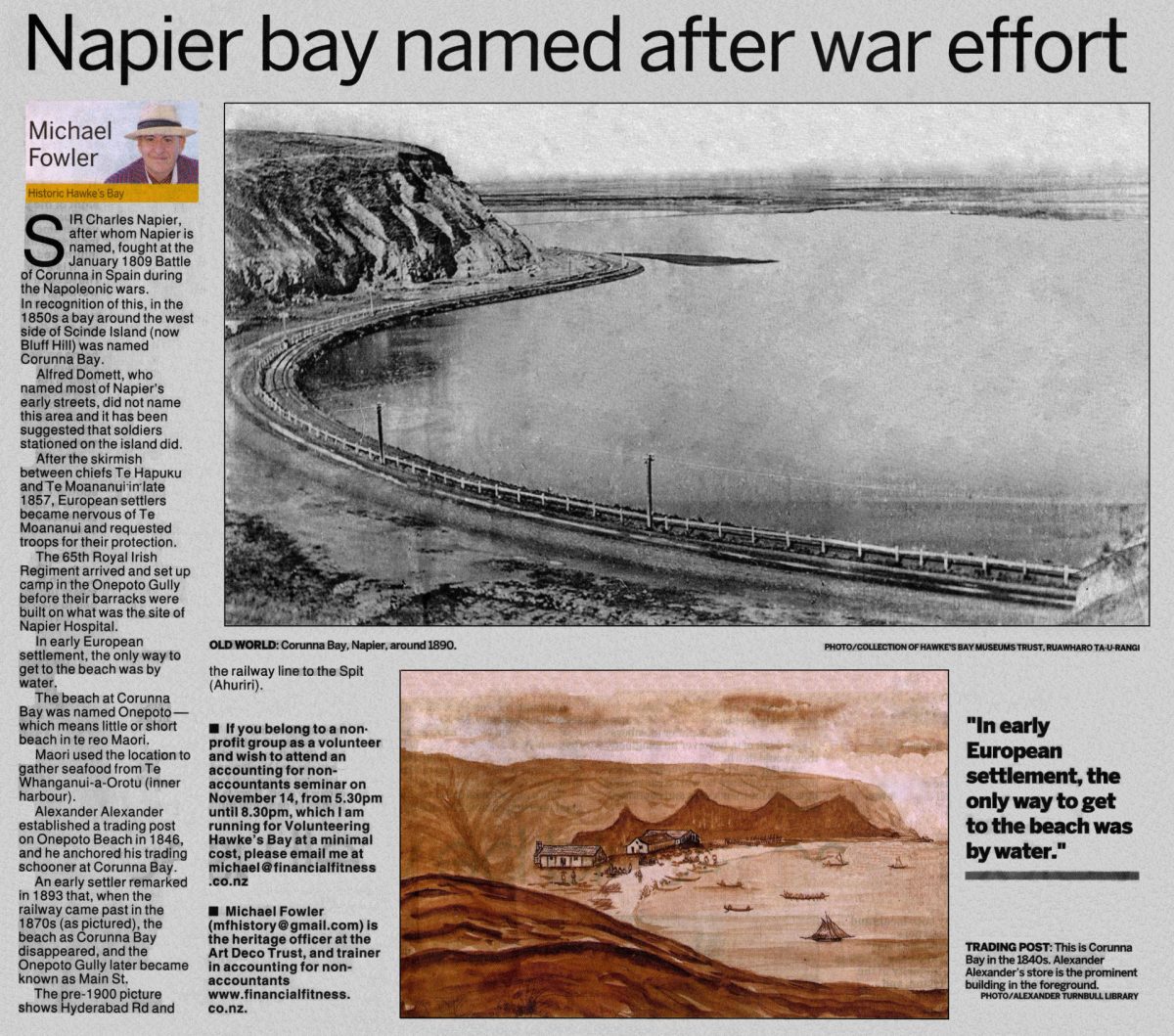Napier bay named after war effort
Michael Fowler
Historic Hawke’s Bay
SIR Charles Napier, after whom Napier is named, fought at the January 1809 Battle of Corunna in Spain during the Napoleonic wars. In recognition of this, in the 1850s a bay around the west side of Scinde Island (now Bluff Hill) was named Corunna Bay.
Alfred Domett, who named most of Napier’s early streets, did not name this area and it has been suggested that soldiers stationed on the island did.
After the skirmish between chiefs Te Hapuku and Te Moananui in late 1857, European settlers became nervous of Te Moananui and requested troops for their protection.
The 65th Royal Irish Regiment arrived and set up camp in the Onepoto Gully before their barracks were built on what was the site of Napier Hospital.
In early European settlement, the only way to get to the beach was by water.
The beach at Corunna Bay was named Onepoto – which means little or short beach in te reo Maori.
Maori used the location to gather seafood from Te Whanganui-a-Orotu (inner harbour).
Alexander Alexander established a trading post on Onepoto Beach in 1846, and he anchored his trading schooner at Corunna Bay.
An early settler remarked in 1893 that, when the railway came past in the 1870s (as pictured), the beach as Corunna Bay disappeared, and the Onepoto Gully later became known as Main St.
The pre-1900 picture shows Hyderabad Rd and the railway line to the Spit (Ahuriri).
“In early European settlement, the only way to get to the beach was by water.”
If you belong to a non-profit group as a volunteer and wish to attend an accounting for non-accountants seminar on November 14, from 5.30pm until 8.30pm, which I am running for Volunteering Hawke’s Bay at a minimal cost, please email me at [email protected]
Michael Fowler ([email protected]) is the heritage officer at the Art Deco Trust, and trainer in accounting for non-accountants [www].financialfitness.co.nz.
Photo captions –
OLD WORLD: Corunna Bay, Napier, around 1890. PHOTO/COLLECTION OF HAWKE’S BAY MUSEUMS TRUST, RUAWHARO TA-U-RANGI
TRADING POST: This is Corunna Bay in the 1840s. Alexander Alexander’s store is the prominent building in the foreground. |
PHOTO/ALEXANDER TURNBULL LIBRARY












Do you know something about this record?
Please note we cannot verify the accuracy of any information posted by the community.